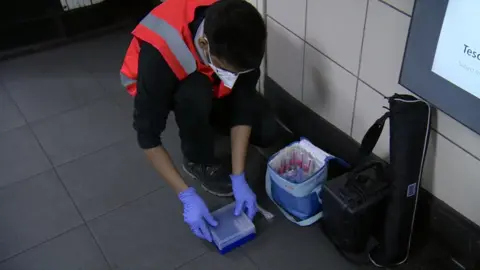London's transport network tests negative for Covid-19
 BBC
BBCThere are no traces of Covid-19 on surfaces and in the air on London Underground or the city's buses, scientists say.
Imperial College London experts carried out tests last month and it is the second time they were negative.
Transport for London (TfL) has stepped up its cleaning regime, but said it was not just a clean environment that will make the Tube and buses safe.
Social distancing and mask wearing all need to be followed as well, it said.
The scientists conducted the tests by trying to mimic a passenger's journey and so took swabs from escalators, handrails, bus shelters and Oyster Card readers.
They also used a special sensor that sucked air through a filter for an hour at 300 litres-per-minute.
Allow X content?
Lilli Matson, chief safety health & environment officer for TfL, said the results were "hugely reassuring", especially for customers using the transport network for essential journeys during the next lockdown phase.
"I believe Tubes and buses are safe to use. We've put in place an enormous range of measures from cleaning to sampling to sanitisers to using antiviral sprays," she said.
"We need to keep up the efforts and keep ensuring we're driving down any risk of this at all."
Research carried out by the RSSB (formerly Rail Safety and Standard Board) in July, found the chances of catching the virus on a train as 1 in 11,000.
This assumed a person, not wearing a mask, was on a train with 44 passengers on an hour's journey, with one change of 22 passengers.
However, the RSSB has said that as the infection rate has increased in he last couple of months, the assumptions used to make this calculation will be different, with an overall increased risk.
